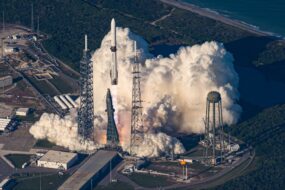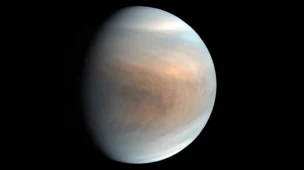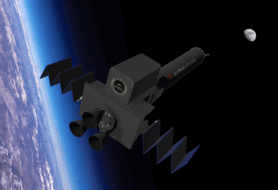In March Madness, your bracket can be busted by an unexpected upset, leaving your dream of predicting the perfect outcome in shambles. On expeditions to Mars, outcomes are equally unpredictable, with a mission’s fate resting on anything from a software glitch to a cosmic dust storm to a mix-up between metric and imperial units.
Today, Payload is excited to lift the wraps on our Mars Madness tournament and open the competition to all 16,000+ of our readers. Over the course of this week, you’ll vote on the “best”—or your favorite—Mars mission.
March Madness ≠ Mars Madness
Just to get this out of the way upfront, March Madness ≠ Mars Madness. We are evaluating Mars missions, not basketball teams competing on primetime TV. While a sports tournament has a decisive outcome, a crowdsourced evaluation of the “best” Mars mission is very subjective, open to interpretation, and prone to Twitter clapbacks.
By our count, men’s and women’s basketball have a total of 714 D1 teams, and their single-elimination annual tournaments consist of 68 teams competing in seven rounds for the national championship. By contrast, the world has launched 48 missions to Mars. So, for Mars Madness, we’ll be skipping the 68-contestant, seven-round schtick and go straight to the Space Sweet Sixteen stage.
The regions
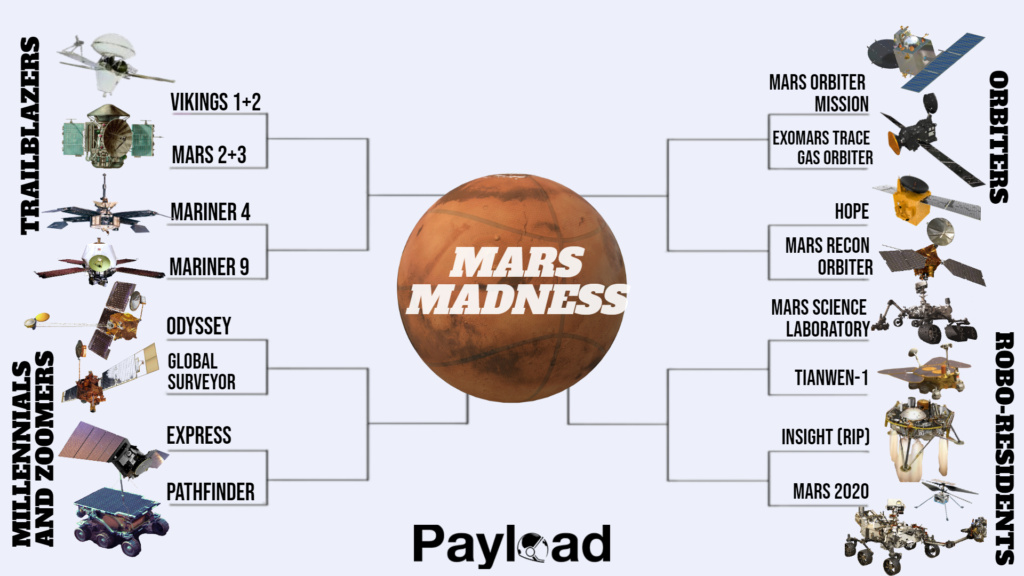
Over the weekend, we handpicked 16 Mars missions to populate our bracket. We didn’t seed them so as to not influence your voting…and because it was too hard. We somewhat arbitrarily grouped them into four regions:
- Trailblazers: early missions that laid the groundwork for the future.
- Millennials + Zoomers: missions that launched in the 1990s or aughts.
- Orbiters: spacecraft that were tasked by various nations to orbit Mars.
- Robo-residents: rovers that currently inhabit Mars, or did until very recently. (Pour one out for InSight).
A note on methodology
Overlaps exist between these categories, and the methodology is non-scientific. Bracketology is hard. Decisions were made—such as grouping the US Viking and USSR Mars missions together, but not Mariner 4 and 9.
We didn’t include Matt Damon or planned missions—like Mars Sample Return—that surely would have been top-seeded competitors. In any event, this is the bracket we’ve landed on.
Now for the fun part
We’re proceeding in four stages. The first round of voting was open for 1.47 Martian sols (aka 36 hours), and closed Tuesday night at 9pm EDT. Payload readers voted on the first eight matchups:
- Viking 1 & 2 vs. Mars 2 & 3
- Mariner 4 vs. Mariner 9
- Mars Odyssey vs. Mars Global Surveyor
- Mars Express vs. Mars Pathfinder
- Mars Orbiter Mission vs. ExoMars Trace Gas Orbiter
- The Hope mission vs. the Mars Reconnaissance Orbiter
- Mars Science Laboratory (Curiosity) vs. Tianwen-1
- InSight vs. Mars 2020 (Perseverance + Inspiration)
Mars Madness: Elite Eight
Here’s the updated bracket, along with a breakdown of results from the first round:
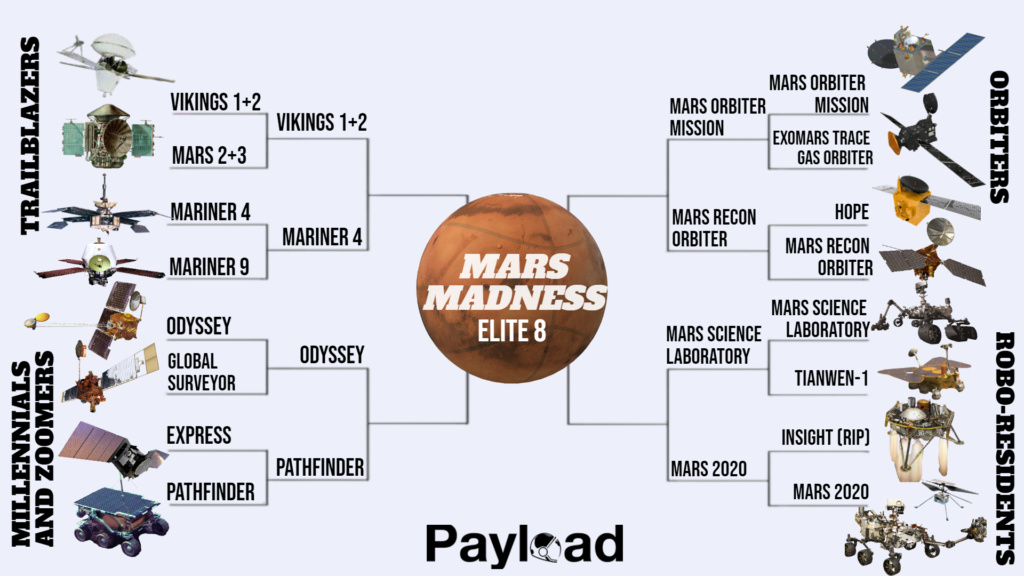
- In the trailblazers region…Vikings 1 & 2 triumphed over Mars 2 & 3 with 85.1% of the vote. And Mariner 4 beat out its descendant, Mariner 9, with roughly two-thirds of the tally.
- For the Millennials + Zoomers matchups…Odyssey won its matchup against Global Surveyor with 60.4% of the vote, and Pathfinder trounced Mars Express, finishing with 88.1% of all votes.
- In the orbiters region…Mars Orbiter Mission vanquished the ExoMars Trace Gas Orbiter with 68.3% of the vote. Mars Reconnaissance Orbiter had an even stronger showing, handily defeating Hope with 82.2% of all votes.
- Finally…in the Robo-residents region we had the most lopsided matchups of all time (oops). Mars Science Laboratory (Curiosity) and Mars 2020 (Perseverance + Ingenuity) thwacked their opponents—Tianwen-1 and InSight—with 97% and 96% of the votes.
Round two voting is now open
Cast your second-round votes here, if preferred, or using the embedded survey below:
What comes next?
We’ve proceeded to the Elite Eight in Wednesday’s newsletter. This round of voting will be open for 24 hours.
We’ll then move to voting on the Final Four in Thursday’s newsletter. On Friday, y’all will pick the crowning champion of Payload’s Mars Madness 2023 tournament.
Whether you’re just now joining us have been with us since the beginning of the tourny, may the Martian odds be ever in your favor.
Appendix: Mission Info
If you need to brush up on your history of Mars missions, no sweat, we’ve got you covered.
Mars Madness Trailblazers
- Viking 1 & 2 (USA, 1975): These two lander/orbiter spacecraft were the first to land on Mars and transmit high-resolution images of the surface, while also conducting experiments to search for microbial life.
- Mars 2 & 3 (USSR, 1971): Mars 2 and 3 were orbiter/lander missions. While Mars 2’s lander crashed, Mars 3 became the first craft to achieve a soft landing on Mars but stopped transmitting shortly thereafter.
- Mariner 4 (NASA, 1964): The first successful flyby of Mars, Mariner 4 transmitted the first close-up images of the Martian surface.
- Mariner 9 (NASA, 1971): As the first spacecraft to orbit Mars, Mariner 9 mapped 85% of the Martian surface and discovered volcanoes, canyons, and evidence of water erosion.
Mars Madness Millennials and Zoomers
- Mars Odyssey (NASA, 2001): Mars Odyssey is a long-lasting orbiter that has been studying the Martian surface composition, environment, and searching for water ice deposits. Operational for 21 years, 11 months, and counting, Odyssey holds the record for the longest continually active spacecraft in orbit around a planet not named Earth.
- Mars Global Surveyor (NASA, 1996): The mission studied the entire Martian surface, atmosphere, and interior, and returned more data about the Red Planet than all previous Mars missions combined.
- Mars Express (ESA, 2003): Mars Express has been studying the Martian atmosphere, geology, and searching for sub-surface water, while also providing high-res images of the surface.
- Mars Pathfinder (NASA, 1996): Pathfinder demonstrated a new landing technique and deployed the first rover, Sojourner, to explore Mars and analyze rocks and soil.
Mars Madness Orbiters
- Mars Orbiter Mission (ISRO, 2013): India’s first interplanetary mission, also known as Mangalyaan, aimed to study Mars’ surface features, morphology, mineralogy, and atmosphere. Designed to only have a six-month lifespan, India’s MOM recently concluded after an impressive eight years of operations.
- ExoMars Trace Gas Orbiter (ESA/Roscosmos, 2016): The TGO mission is primarily focused on studying the Martian atmosphere and searching for signs of gases related to biological or geological processes.
- The Hope mission (UAE Space Agency, 2020): Launched by the United Arab Emirates, the mission aims to study the Martian atmosphere, weather, and climate, and build a more comprehensive understanding of Mars’ meteorological dynamics.
- Mars Reconnaissance Orbiter (NASA, 2005): The orbiter is studying the Martian surface, atmosphere, and subsurface in high detail, while also serving as a key communication relay for other Mars missions.
Mars Madness Robo-Residents
- Mars Science Laboratory, aka Curiosity (NASA, 2011): Curiosity is a car-sized rover that has been exploring Gale Crater, analyzing soil and rock samples, and studying the climate and geology of Mars.
- Tianwen-1 (CNSA, 2020): The Chinese mission consists of an orbiter, lander, and the Zhurong rover, aiming to study the Martian surface, geology, and atmosphere, while also searching for water ice deposits. Zhurong entered hibernation last May and was supposed to reawake in December. Scientists are holding out hope they can reactivate the rover.
- InSight (NASA, 2018): InSight was a stationary lander that studied the interior structure, composition, and seismic activity of Mars to better understand its formation and evolution. NASA’s InSight mission ended last December, after more than four years of collecting unique scientific observations on Mars.
- Mars 2020, including Perseverance + Ingenuity (NASA, 2020): The mission includes the Perseverance rover, designed to search for signs of ancient microbial life and collect samples for future return to Earth, and Ingenuity, a small helicopter that demonstrated the first powered flight on another planet, paving the way for aerial exploration on Mars. Ingenuity has so far flown an astonishing 47 times, far exceeding expectations for the helicopter.

